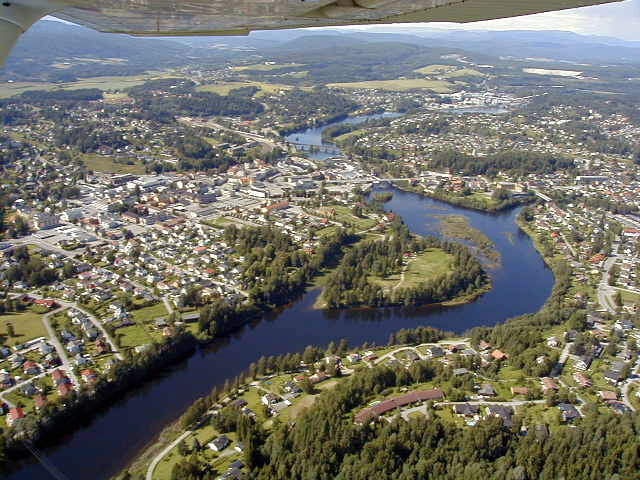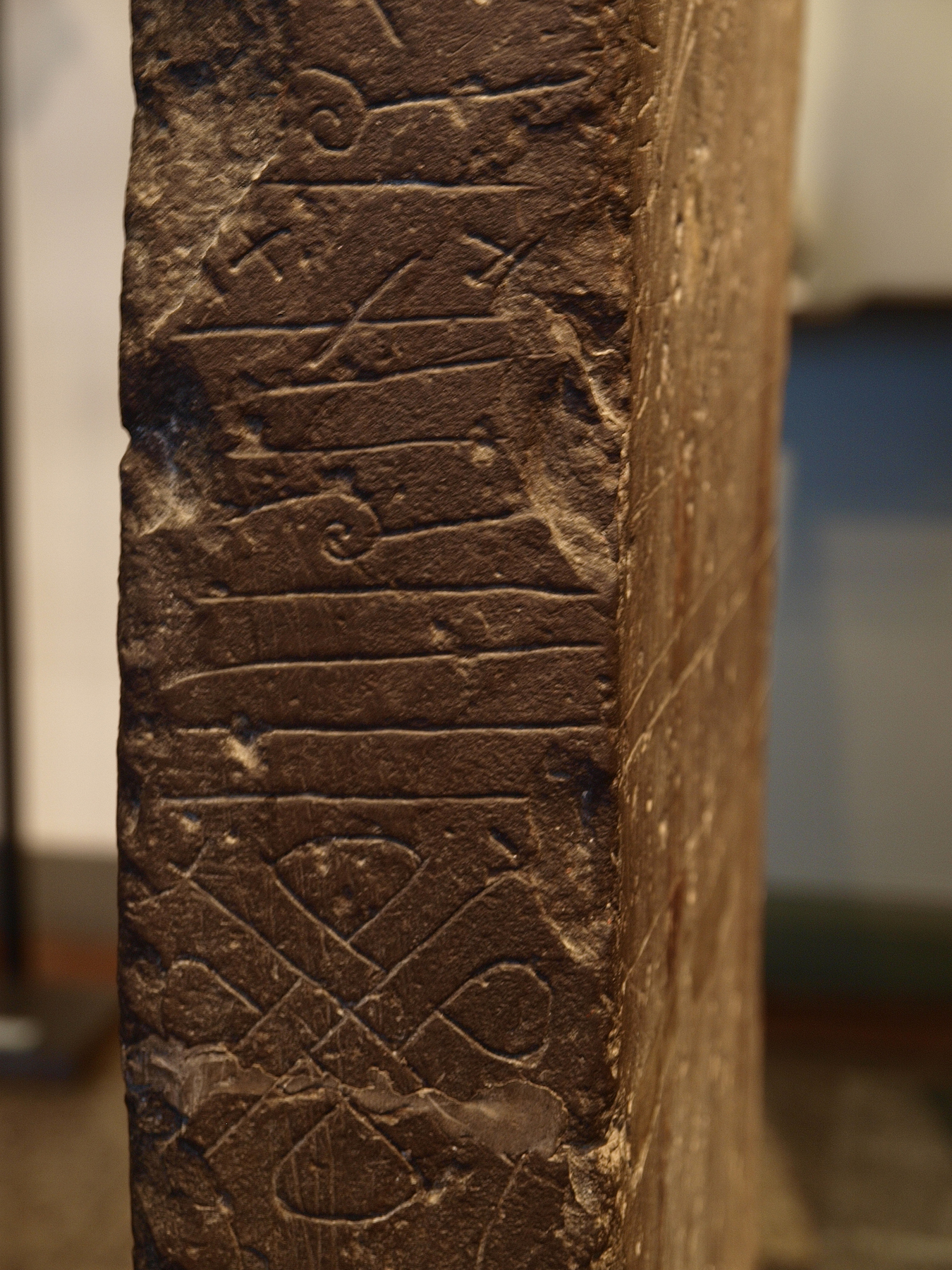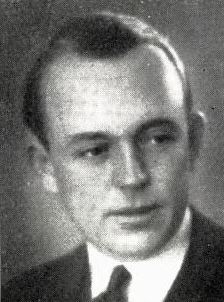|
Ringerike (municipality)
Ringerike is a Municipalities of Norway, municipality in Buskerud Counties of Norway, county, Norway. It is part of the Districts of Norway, traditional region of Ringerike (traditional district), Ringerike. The administrative centre of the municipality is the List of cities in Norway, town of Hønefoss. The municipality of Ringerike was created on 1 January 1964 after the merger of the town of Hønefoss and the rural municipalities of Hole, Norway, Hole, Norderhov, Tyristrand, and Ådal. However, the area of Hole was removed from the municipality of Ringerike on 1 January 1977 to become a separate municipality once again. The historic area of Ringerike included not just the modern municipality of Ringerike but also Hole and Krødsherad, Modum, and Sigdal. General information Etymology The Old Norse language, Norse form of this name was ''Hringaríki''. The first element is (probably) the genitive plural of ''hringir'', the name of an old Germanic peoples, Germanic tribe. The la ... [...More Info...] [...Related Items...] OR: [Wikipedia] [Google] [Baidu] |
Norderhov
Norderhov is a former municipality located within Ringerike (municipality), Ringerike in Buskerud county, Norway. Municipality Norderhov municipality was established on January 1, 1838 (see formannskapsdistrikt). According to the 1835 census the municipality had a population of 7,234. On 22 April 1852 the city of Hønefoss was separated from Norderhov to constitute a separate administrative unit. In 1857 the rural district Ådal was separated from Norderhov, leaving Norderhov with a population of 6,846. In 1938 a part of Norderhov with 268 inhabitants was moved to Hønefoss, and on 1 January 1964 the rest was merged with Hønefoss, Ådal, Tyristrand and Hole, Norway, Hole to form the new municipality Ringerike (municipality), Ringerike. Norderhov was by far the largest municipality prior to the merger, with a population of 15,143. Parish The municipality (originally the parish) was named after the old farm Norderhov (Old Norse: ''Njardarhof''), since the first church was built t ... [...More Info...] [...Related Items...] OR: [Wikipedia] [Google] [Baidu] |
Ringerike (traditional District)
Ringerike is a traditional district in Norway, commonly consisting of the municipalities Hole, Norway, Hole and Ringerike (municipality), Ringerike in Buskerud county. In older times, Ringerike had a larger range which went westward to the municipalities Krødsherad, Modum, and Sigdal, also in Buskerud. Ringerike has a rich history that is connected with one of the most notable kings in the history of Norway, the father of King Harald Fairhair Halfdan the Black, who subdued Gandalf Alfgeirsson, King of Alfheim and half of Vingulmork, and the Dagling clan. Gandalf was possibly the last king of Ringerike, whose name is given to the eponymous King Hring, son of Raum the Old (cf. Romerike), son of Nór (the eponymous ancestor of Norwegians), according to the Sagas of the ancient Northernlands, better known as the ''Orkneyinga saga''. It is possible that this, as the name suggests, was the legendary heartland of the House of Sigurd Hring and Ivar the Wide-Fathoming. There are also many ... [...More Info...] [...Related Items...] OR: [Wikipedia] [Google] [Baidu] |
Norse Language
Old Norse, also referred to as Old Nordic or Old Scandinavian, was a stage of development of North Germanic languages, North Germanic dialects before their final divergence into separate Nordic languages. Old Norse was spoken by inhabitants of Scandinavia and their Viking expansion, overseas settlements and chronologically coincides with the Viking Age, the Christianization of Scandinavia, and the consolidation of Scandinavian kingdoms from about the 8th to the 15th centuries. The Proto-Norse language developed into Old Norse by the 8th century, and Old Norse began to develop into the modern North Germanic languages in the mid- to late 14th century, ending the language phase known as Old Norse. These dates, however, are not precise, since written Old Norse is found well into the 15th century. Old Norse was divided into three dialects: Old West Norse (Old West Nordic, often referred to as ''Old Norse''), Old East Norse (Old East Nordic), and Old Gutnish. Old West Norse and O ... [...More Info...] [...Related Items...] OR: [Wikipedia] [Google] [Baidu] |
Søndre Land
Søndre Land is a List of municipalities of Norway, municipality in Innlandet county, Norway. It is located in the Traditional districts of Norway, traditional district of Land, Norway, Land. The administrative centre of the municipality is the village of Hov, Norway, Hov. Other villages in the municipality include Fluberg and Odnes. The municipality is the 156th largest by area out of the 356 municipalities in Norway. Søndre Land is the 171st most populous municipality in Norway with a population of 5,564. The municipality's population density is and its population has decreased by 2.4% over the previous 10-year period. General information The old Land (municipality), Land Municipality was established on 1 January 1838 after the formannskapsdistrikt law went into effect. This municipality was quite large and in less than a decade, the municipality was divided. In 1847, the old Land Municipality was divided into Nordre Land (population: 4,595) in the north and Søndre Land ( ... [...More Info...] [...Related Items...] OR: [Wikipedia] [Google] [Baidu] |
Sør-Aurdal
Sør-Aurdal is a List of municipalities of Norway, municipality in Innlandet county, Norway. It is located in the Traditional districts of Norway, traditional district of Valdres. The administrative centre of the municipality is the village of Bagn. Other villages in the municipality include Begna, Norway, Begna, Hedalen, and Begnadalen. The municipality is the 101st largest by area out of the 356 municipalities in Norway. Sør-Aurdal is the 233rd most populous municipality in Norway with a population of 2,866. The municipality's population density is and its population has decreased by 8.9% over the previous 10-year period. General information The prestegjeld, parish of ''Søndre Aurdal'' was established as a municipality on 1 January 1838 (see formannskapsdistrikt law). On 1 January 1894, the new Etnedal Municipality was established by merging the eastern valley area of ''Nordre Etnedal'' (population: 362) from the neighboring Nord-Aurdal, Nordre Aurdal municipality and the ... [...More Info...] [...Related Items...] OR: [Wikipedia] [Google] [Baidu] |
Petty Kingdom
A petty kingdom is a kingdom described as minor or "petty" (from the French 'petit' meaning small) by contrast to an empire or unified kingdom that either preceded or succeeded it (e.g. the numerous kingdoms of Anglo-Saxon England unified into the Kingdom of England in the 10th century, or the numerous Gaelic kingdoms of Ireland as the Kingdom of Ireland in the 16th century). Alternatively, a petty kingdom would be a minor kingdom in the immediate vicinity of larger kingdoms, such as the medieval Kingdom of Mann and the Isles relative to the kingdoms of Scotland or England or the Viking kingdoms of Scandinavia. In the parallel mainland Southeast Asian political model, petty kingdoms were known as ''mueang''. By the European High Middle Ages, many post-Roman Early Middle Ages petty kingdoms had evolved into principalities, grand duchies, or duchies. By the European Early Modern era, many of these principalities had been mediatized into larger monarchies, but the ruling fa ... [...More Info...] [...Related Items...] OR: [Wikipedia] [Google] [Baidu] |
Canting Arms
Canting arms are heraldry, heraldic bearings that represent the bearer's name (or, less often, some attribute or function) in a visual pun or rebus. The expression derives from the latin ''cantare'' (to sing). French heralds used the term (), as they would sound out the name of the armiger. Many armorial allusions require research for elucidation because of changes in language and dialect that have occurred over the past millennium. Canting arms – some in the form of rebuses – are quite common in German civic heraldry. They have also been increasingly used in the 20th century among the British royal family. When the visual representation is expressed through a rebus, this is sometimes called a ''rebus coat of arms''. An in-joke among the Society for Creative Anachronism heralds is the pun, "Heralds don't pun; they cant." Examples of canting arms Personal coats of arms A famous example of canting arms are those of Queen Elizabeth The Queen Mother's paternal family, th ... [...More Info...] [...Related Items...] OR: [Wikipedia] [Google] [Baidu] |
Gold (color)
Gold, also called golden, is a color tone resembling the gold chemical element. The web color ''gold'' is sometimes referred to as ''golden'' to distinguish it from the color ''metallic gold''. The use of ''gold'' as a color term in traditional usage is more often applied to the color "metallic gold" (shown below). The first recorded use of ''golden'' as a color name in English was in 1300 to refer to the element gold. The word ''gold'' as a color name was first used in 1400 and in 1423 to refer to blond hair.Maerz and Paul ''A Dictionary of Color'' New York:1930 McGraw-Hill Page 195 Metallic gold, such as in paint, is often called ''goldtone'' or ''gold tone'', or '' gold ground'' when describing a solid gold background. In heraldry, the French word or is used. In model building, the color gold is different from brass. A shiny or metallic silvertone object can be painted with transparent yellow to obtain goldtone, something often done with Christmas decorations. ... [...More Info...] [...Related Items...] OR: [Wikipedia] [Google] [Baidu] |
Circle
A circle is a shape consisting of all point (geometry), points in a plane (mathematics), plane that are at a given distance from a given point, the Centre (geometry), centre. The distance between any point of the circle and the centre is called the radius. The length of a line segment connecting two points on the circle and passing through the centre is called the diameter. A circle bounds a region of the plane called a Disk (mathematics), disc. The circle has been known since before the beginning of recorded history. Natural circles are common, such as the full moon or a slice of round fruit. The circle is the basis for the wheel, which, with related inventions such as gears, makes much of modern machinery possible. In mathematics, the study of the circle has helped inspire the development of geometry, astronomy and calculus. Terminology * Annulus (mathematics), Annulus: a ring-shaped object, the region bounded by two concentric circles. * Circular arc, Arc: any Connected ... [...More Info...] [...Related Items...] OR: [Wikipedia] [Google] [Baidu] |
Coat Of Arms
A coat of arms is a heraldry, heraldic communication design, visual design on an escutcheon (heraldry), escutcheon (i.e., shield), surcoat, or tabard (the last two being outer garments), originating in Europe. The coat of arms on an escutcheon forms the central element of the full achievement (heraldry), heraldic achievement, which in its whole consists of a shield, supporters, a crest (heraldry), crest, and a motto. A coat of arms is traditionally unique to the armiger (e.g. an individual person, family, state, organization, school or corporation). The term "coat of arms" itself, describing in modern times just the heraldic design, originates from the description of the entire medieval chainmail "surcoat" garment used in combat or preparation for the latter. Roll of arms, Rolls of arms are collections of many coats of arms, and since the early Modern Age centuries, they have been a source of information for public showing and tracing the membership of a nobility, noble family, a ... [...More Info...] [...Related Items...] OR: [Wikipedia] [Google] [Baidu] |
Romerike
Romerike is a Districts of Norway, traditional district located north-east of Oslo, in what is today south-eastern Norway. It consists of the Akershus municipalities Lillestrøm, Lørenskog, Nittedal, Rælingen and Aurskog-Høland in the southern end (Nedre Romerike), and Ullensaker, Gjerdrum, Nannestad, Nes municipality, Nes, Eidsvoll and Hurdal in the northern end (Øvre Romerike). Etymology The Old Norse form of the name was ', but the name must be much older (see below). The first element is the genitive plural of ' m ("person from Romerike"); the final element is ' n ("realm"; cf. Ringerike (traditional district), Ringerike, Rånrike). In the ''Hversu Noregr byggdist'' and in ''Thorsteins saga Víkingssonar'', the name is attributed to the mythical king Raum the Old (''Raumr inn gamli''). According to the latter saga, the members of the family were big and ugly, and because of this big and ugly people were called "great Raumar". The linguistic similarity to The Roman Empi ... [...More Info...] [...Related Items...] OR: [Wikipedia] [Google] [Baidu] |






